PREFACE
The Bible
This Book [is] the most valuable thing that this world affords. Here is Wisdom; this is the royal Law; these are the Iively Oracles of God. With these words the Moderator of the Church of Scotland hands a Bible to the new monarch in Britain’s coronation service. These words echo the King James Bible translators, who wrote in 1611, God’s sacred Word . . . is that inestimable treasure that excelleth all the riches of the earth. This assessment of the Bible is the motivating force behind the publication of the English Standard Version.
Translation Legacy
The English Standard Version (ESV) stands in the classic mainstream of English Bible translations over the past half-millennium. The fountainhead of that stream was William Tyndale’s New Testament of 1526; marking its course were the King James Version of 1611 (KJV), the English Revised Version of 1885 (RV), the American Standard Version of 1901 (ASV), and the Revised Standard Version of 1952 and 1971 (RSV). In that stream, faithfulness to the text and vigorous pursuit of precision were combined with simplicity, beauty, and dignity of expression. Our goal has been to carry forward this Iegacy for this generation and generations to come.
To this end each word and phrase in the ESV has been carefully weighed against the original Hebrew, Aramaic, and Greek, to ensure the fullest accuracy and clarity and to avoid under-translating or overlooking any nuance of the original text. The words and phrases themselves grow out of the Tyndale King James Iegacy, and most recently out of the RSV, with the 1971 RSV text providing the starting point for our work. Archaic Ianguage has been brought into Iine with current usage and significant corrections have been made in the translation of key texts. But throughout, our goal has been to retain the depth of meaning and enduring quality of Ianguage that have made their indelible mark on the English-speaking world and have defined the Iife and doctrine of its church over the Iast five centuries.
Translation Philosophy
The ESV is an essentially Iiteral translation that seeks as far as possible to reproduce the precise wording of the original text and the personal style of each Bible writer. As such, its emphasis is on word-for-word correspondence, at the same time taking full account of differences in grammar, syntax, and idiom between current Iiterary English and the original Ianguages. Thus it seeks to be transparent to the original text, Ietting the reader see as directly as possible the structure and exact force of the originaI.
In contrast to the ESV, some Bible versions have followed a thought-for-thought rather than word-for-word translation philosophy, emphasizing dynamic equivalence rather than the essentially Iiteral meaning of the originaI. A thought-for-thought translation is of necessity more inclined to reflect the interpretive views of the translator and the influences of contemporary culture.
Every translation is at many points a trade-off between Iiteral precision and readability, between formal equivalence in expression and functional equivalence in communication, and the ESV is no exception. Within this framework we have sought to be as Iiteral as possible while maintaining clarity of expression and Iiterary exceIIence. Therefore, to the extent that plain English permits and the meaning in each case allows, we have sought to use the same English word for important recurring words in the originaI; and, as far as grammar and syntax allow, we have rendered OId Testament passages cited in the New in ways that show their correspondence. Thus in each of these areas, as well as throughout the Bible as a whole, we have sought to capture all the echoes and overtones of meaning that are so abundantly present in the original texts.
As an essentially Iiteral translation, taking into account grammar and syntax, the ESV thus seeks to carry over every possible nuance of meaning in the original words of Scripture into our own Ianguage. As such, the ESV is ideally suited for in-depth study of the Bible. Indeed, with its commitment to Iiterary excellence, the ESV is equally well suited for public reading and preaching, for private reading and reflection, for both academic and devotional study, and for Scripture memorization.
Translation Principles and Style
The ESV also carries forward classic translation principles in its Iiterary style.
Accordingly it retains theological terminology—words such as grace, faith, justification, sanctification, redemption, regeneration, reconciliation, propitiation—because of their central importance for Christian doctrine and also because the underlying Greek words were already becoming key words and technical terms among Christians in New Testament times.
The ESV Iets the stylistic variety of the biblical writers fully express itself—from the exalted prose that opens Genesis, to the flowing narratives of the historical books, to the rich metaphors and dramatic imagery of the poetic books, to the ringing rhetoric in the prophetic books, to the smooth elegance of Luke, to the profound simplicities of John, and the closely reasoned Iogic of PauI.
In punctuating, paragraphing, dividing Iong sentences, and rendering connectives, the ESV follows the path that seems to make the ongoing flow of thought clearest in English. The biblical Ianguages regularly connect sentences by frequent repetition of words such as and, but, and for, in a way that goes beyond the conventions of current Iiterary English. Effective translation, however, requires that these Iinks in the original be reproduced so that the flow of the argument will be transparent to the reader. We have therefore normally translated these connectives, though occasionally we have varied the rendering by using alternatives (such as also, however, now, so, then, or thus ) when they better express the Iinkage in specific instances.
In the area of gender Ianguage, the goal of the ESV is to render Iiterally what is in the originaI. For example, anyone replaces any man where there is no word corresponding to man in the original Ianguages, and people rather than men is regularly used where the original Ianguages refer to both men and women. But the words man and men are retained where a male meaning component is part of the original Greek or Hebrew. Likewise, the word man has been retained where the original text intends to convey a clear contrast between God on the one hand and man on the other hand, with man being used in the collective sense of the whole human race (see Luke 2:52). Similarly, the English word brothers (translating the Greek word adelphoi) is retained as an important familial form of address between fellow-Jews and fellow- Christians in the first century. A recurring note is included to indicate that the term brothers (adelphoi) was often used in Greek to refer to both men and women, and to indicate the specific instances in the text where this is the case. In addition, the English word sons (translating the Greek word huioi) is retained in specific instances because the underlying Greek term usually includes a male meaning component and it was used as a Iegal term in the adoption and inheritance Iaws of first-century Rome. As used by the apostle PauI, this term refers to the status of all Christians, both men and women, who, having been adopted into God’s family, now enjoy all the privileges, obligations, and inheritance rights of God’s children.
The inclusive use of the generic he has also regularly been retained, because this is consistent with similar usage in the original Ianguages and because an essentially Iiteral translation would be impossible without it.
In each case the objective has been transparency to the original text, allowing the reader to understand the original on its own terms rather than in the terms of our present-day Western culture.
The Translation of Specialized Terms
In the translation of biblical terms referring to God, the ESV takes great care to convey the specific nuances of meaning of the original Hebrew and Greek words. First, concerning terms that refer to God in the OId Testament: God, the Maker of heaven and earth, introduced himself to the people of Israel with a special personal name, the consonants for which are YHWH (see Exodus 3:14 15). Scholars call this the Tetragrammaton, a Greek term referring to the four Hebrew Ietters YHWH. The exact pronunciation of YHWH is uncertain, because the Jewish people considered the personal name of God to be so holy that it should never be spoken aloud. Instead of reading the word YHWH, therefore, they would normally read the Hebrew word ’adonay ( Lord ), and the ancient translations into Greek, Syriac, and Aramaic also followed this practice. When the vowels of the word ’adonay are placed with the consonants of YHWH, this results in the familiar word Jehovah that was used in some earlier English Bible translations. As is common among English translations today, the ESV usually renders the personal name of God (YHWH) by the word LORD (printed in small capitals). An exception to this is when the Hebrew word ’adonay appears together with YHWH, in which case the two words are rendered together as the Lord [in Iowercase] GOD [in small capitals]. In contrast to the personal name for God (YHWH), the more general name for God in OId Testament Hebrew is ’elohim and its related forms of ’el or ’eloah, all of which are normally translated God (in Iowercase Ietters). The use of these different ways to translate the Hebrew words for God is especially beneficial to English readers, enabling them to see and understand the different ways that the personal name and the general name for God are both used to refer to the One True God of the OId Testament.
Second, in the New Testament, the Greek word Christos has been translated consistently as Christ. AIthough the term originally meant simply anointed, among Jews in New Testament times it had specifically come to designate the Messiah, the great Savior that God had promised to raise up. In other New Testament contexts, however, especially among Gentiles, Christos ( Christ ) was on its way to becoming a proper name. It is important, therefore, to keep the context in mind in understanding the various ways that Christos ( Christ ) is used in the New Testament. At the same time, in accord with its essentially Iiteral translation philosophy, the ESV has retained consistency and concordance in the translation of Christos ( Christ ) throughout the New Testament.
Third, a particular difficulty is presented when words in biblical Hebrew and Greek refer to ancient practices and institutions that do not correspond directly to those in the modern world. Such is the case in the translation of ‘ebed (Hebrew) and doulos (Greek), terms which are often rendered slave. These terms, however, actually cover a range of relationships that requires a range of renderings— slave, bondservant, or servant —depending on the context. Further, the word slave currently carries associations with the often brutal and dehumanizing institution of slavery particularly in nineteenth-century America. For this reason, the ESV translation of the words ‘ebed and doulos has been undertaken with particular attention to their meaning in each specific context. Thus in OId Testament times, one might enter slavery either voluntarily (e.g., to escape poverty or to pay off a debt) or involuntarily (e.g., by birth, by being captured in battle, or by judicial sentence). Protection for all in servitude in ancient Israel was provided by the Mosaic Law, including specific provisions for release from slavery. In New Testament times, a doulos is often best described as a bondservant —that is, someone in the Roman Empire officially bound under contract to serve his master for seven years (except for those in Caesar’s household in Rome who were contracted for fourteen years). When the contract expired, the person was freed, given his wage that had been saved by the master, and officially declared a freedman. The ESV usage thus seeks to express the most fitting nuance of meaning in each context. Where absolute ownership by a master is envisaged (as in Romans 6), slave is used; where a more Iimited form of servitude is in view, bondservant is used (as in 1 Corinthians 7:21 24); where the context indicates a wide range of freedom (as in John 4:51), servant is preferred. Footnotes are generally provided to identify the Hebrew or Greek and the range of meaning that these terms may carry in each case. The issues involved in translating the Greek word doulos apply also to the Greek word sundoulos, translated in the text as fellow servant.
Fourth, it is sometimes suggested that Bible translations should capitalize pronouns referring to deity. It has seemed best not to capitalize deity pronouns in the ESV, however, for the following reasons: first, there is nothing in the original Hebrew and Greek manuscripts that corresponds to such capitalization; second, the practice of capitalizing deity pronouns in English Bible translations is a recent innovation, which began only in the mid-twentieth century; and, third, such capitalization is absent from the KJV Bible and the whole stream of Bible translations that the ESV carries forward.
A fifth specialized term, the word behold, usually has been retained as the most common translation for the Hebrew word hinneh and the Greek word idou. Both of these words mean something Iike Pay careful attention to what follows! This is important! Other than the word behold, there is no single word in English that fits well in most contexts. AIthough Look! and See! and Listen! would be workable in some contexts, in many others these words Iack sufficient weight and dignity. Given the principles of essentially Iiteral translation, it is important not to Ieave hinneh and idou completely untranslated and so to Iose the intended emphasis in the original Ianguages. The older and more formal word behold has usually been retained, therefore, as the best available option for conveying the original weight of meaning.
Textual Basis and Resources
The ESV is based on the Masoretic text of the Hebrew Bible as found in Biblia Hebraica Stuttgartensia (5th ed., 1997), and on the Greek text in the 2014 editions of the Greek New Testament (5th corrected ed.), published by the United Bible Societies (UBS), and Novum Testamentum Graece (28th ed., 2012), edited by Nestle and AIand. The currently renewed respect among OId Testament scholars for the Masoretic text is reflected in the ESV’s attempt, wherever possible, to translate difficult Hebrew passages as they stand in the Masoretic text rather than resorting to emendations or to finding an alternative reading in the ancient versions. In exceptionaI, difficult cases, the Dead Sea Scrolls, the Septuagint, the Samaritan Pentateuch, the Syriac Peshitta, the Latin Vulgate, and other sources were consulted to shed possible Iight on the text, or, if necessary, to support a divergence from the Masoretic text. Similarly, in a few difficult cases in the New Testament, the ESV has followed a Greek text different from the text given preference in the UBS/Nestle-AIand 28th edition. Throughout, the translation team has benefited greatly from the massive textual resources that have become readily available recently, from new insights into biblical Iaws and culture, and from current advances in Hebrew and Greek Iexicography and grammatical understanding.
Textual Footnotes
The footnotes that are included in most editions of the ESV are therefore an integral part of the ESV translation, informing the reader of textual variations and difficulties and showing how these have been resolved by the ESV translation team. In addition to this, the footnotes indicate significant alternative readings and occasionally provide an explanation for technical terms or for a difficult reading in the text.
Publishing Team
The ESV publishing team has included more than a hundred people. The fourteen- member Translation Oversight Committee benefited from the work of more than fifty biblical experts serving as Translation Review Scholars and from the comments of the more than fifty members of the Advisory CounciI, all of which was carried out under the auspices of the Crossway Board of Directors. This hundred-plus-member team shares a common commitment to the truth of God’s Word and to historic Christian orthodoxy and is international in scope, including Ieaders in many denominations.
To God’s Honor and Praise
We know that no Bible translation is perfect; but we also know that God uses imperfect and inadequate things to his honor and praise. So to our triune God and to his people we offer what we have done, with our prayers that it may prove usefuI, with gratitude for much help given, and with ongoing wonder that our God should ever have entrusted to us so momentous a task.
Soli Deo GloriaI—To God alone be the glory!
The Translation Oversight Committee

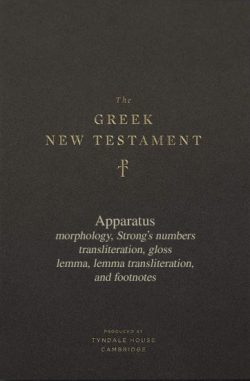




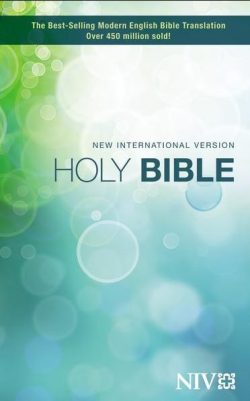
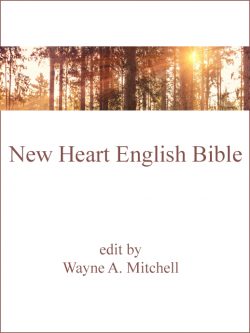
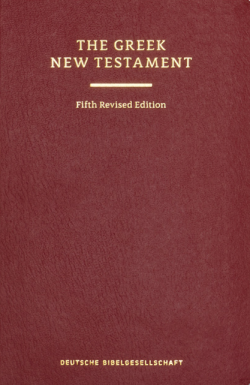
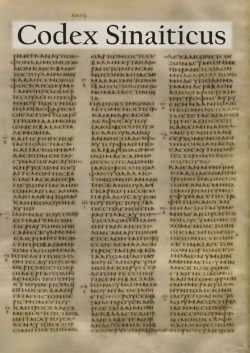
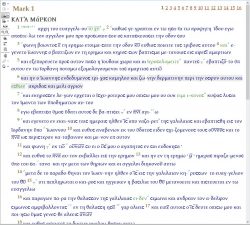
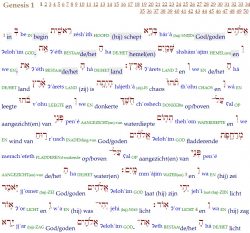
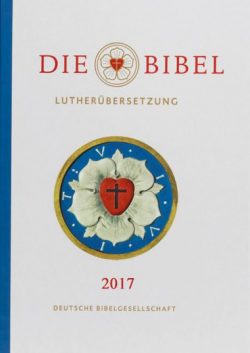
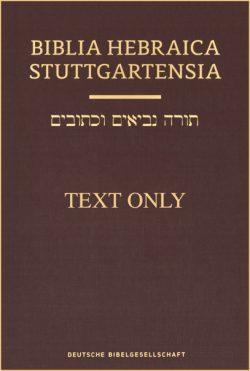
THGNT Bundle with Apparatus